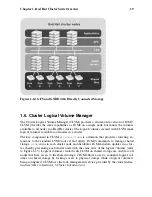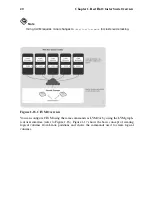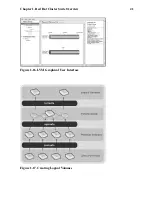
Chapter 1. Red Hat Cluster Suite Overview
33
1.8.4.2. Firewall Marks
Firewall marks are an easy and efficient way to a group ports used for a protocol or group
of related protocols. For example, if LVS is deployed to run an e-commerce site, firewall
marks can be used to bundle HTTP connections on port 80 and secure, HTTPS connections
on port 443. By assigning the same firewall mark to the virtual server for each protocol,
state information for the transaction can be preserved because the LVS router forwards all
requests to the same real server after a connection is opened.
Because of its efficiency and ease-of-use, administrators of LVS should use firewall marks
instead of persistence whenever possible for grouping connections. However, you should
still add persistence to the virtual servers in conjunction with firewall marks to ensure the
clients are reconnected to the same server for an adequate period of time.
1.9. Cluster Administration GUI
This section provides an overview of the cluster administration graphical user interface
(GUI) available with Red Hat Cluster Suite —
system-config-cluster
.
The GUI is for use with the cluster infrastructure and the high-availability
service management components (refer to Section 1.3
Cluster Infrastructure
and
Section 1.4
High-availability Service Management
). The GUI consists of two major
functions: the
Cluster Configuration Tool
and the
Cluster Status Tool
. The
Cluster
Configuration Tool
provides the capability to create, edit, and propagate the cluster
configuration file (
/etc/cluster/cluster.conf
). The
Cluster Status Tool
provides
the capability to manage high-availability services. The following sections summarize
those functions.
•
Section 1.9.1
Cluster Configuration Tool
•
Section 1.9.2
Cluster Status Tool
In addition to the Cluster Administration GUI, command line tools are available for ad-
ministering the cluster infrastructure and the high-availability service management com-
ponents. The command line tools are used by the Cluster Administration GUI and init
scripts supplied by Red Hat. Table 1-1 summarizes the command line tools.
Содержание CLUSTER SUITE - FOR RHEL 4
Страница 1: ...Red Hat Cluster Suite for RHEL 4 Overview ...
Страница 4: ......
Страница 10: ...vi About This Document ...
Страница 47: ...Chapter 1 Red Hat Cluster Suite Overview 37 Figure 1 25 Cluster Configuration Structure ...
Страница 62: ...52 Chapter 1 Red Hat Cluster Suite Overview ...
Страница 72: ...62 Chapter 2 Red Hat Cluster Suite Component Summary ...






























